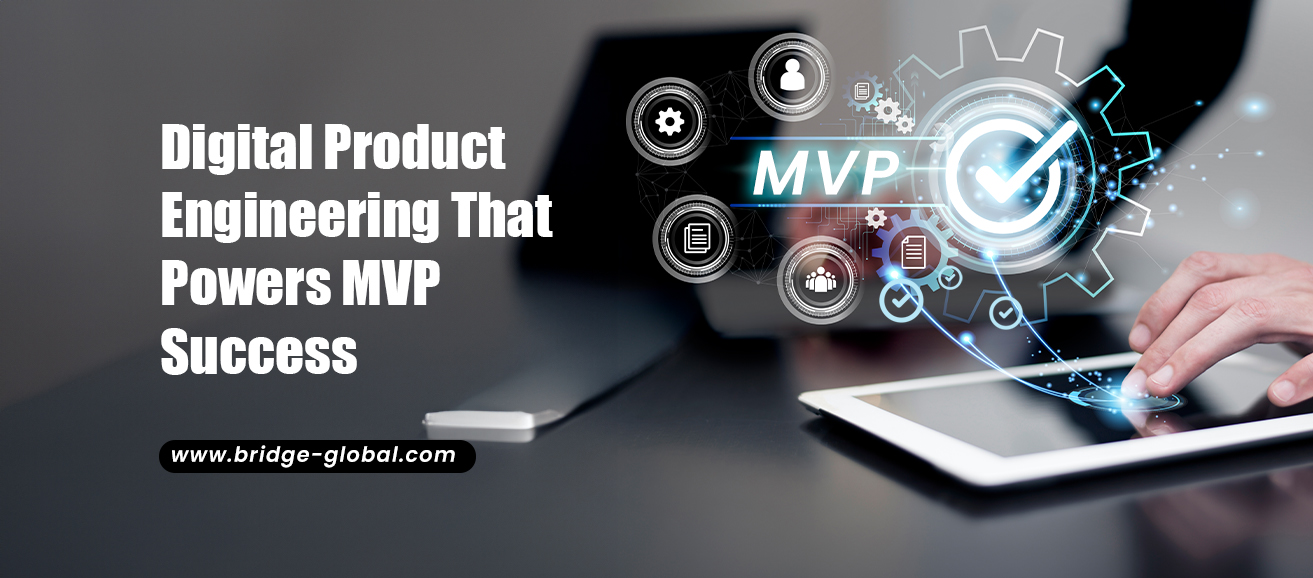Digital Product Engineering: From Idea to MVP
Every groundbreaking product begins as a spark of an idea. But moving from that idea to a functional, market-ready solution demands more than just coding skills or a robust tech stack - it requires a holistic and iterative process called digital product engineering. This journey fuses creativity, business insight, and technological precision to shape meaningful digital experiences that solve real user problems.
Today’s digital-first economy compels businesses to launch fast, pivot early, and scale smart. The MVP (or Minimum Viable Product) approach enables this by focusing on launching a usable version of the product that delivers core functionality while allowing room for feedback, refinement, and iteration. An effective MVP is more than a shortcut; it is a strategic asset that validates your concept and streamlines your path to success.
Let’s explore how digital product engineering transforms ideas into scalable MVPs - and ultimately, high-impact products - with the power of modern technologies, agile development, and business intelligence.
Understanding the Foundation of Digital Product Engineering

At its core, digital product engineering is about building solutions that are purposeful, scalable, and aligned with user needs. It begins with deep discovery; understanding what problem the product aims to solve, who the users are, and how their challenges are currently being addressed (or not).
This discovery phase is powered by user interviews, competitor benchmarking, customer journey mapping, and trend analyses. The goal is to capture unmet needs, pain points, and behavioral patterns. Every leading AI software development company leverages these insights to conceptualize product frameworks that balance business objectives and user expectations.
This is also where strategic alignment takes shape. Teams define the product vision, prioritize functionalities, and create an architecture that is modular, scalable, and flexible enough to evolve.
MVP Development: Lean, Focused, and Feedback-Driven

Once the foundational research is complete, teams begin scoping the MVP. This is the leanest possible version of the product that can solve a core user problem and gather feedback. MVP development is not about doing less, it’s about doing what matters most first.
User stories, wireframes, and prototypes come into play during this phase. Agile methodologies drive rapid iteration cycles, enabling small yet meaningful releases. Each sprint adds value, allowing stakeholders to test assumptions, spot inefficiencies, and course-correct without significant sunk costs.
A key advantage of partnering with an AI software development company is the ability to embed AI capabilities from the get-go - think smart search, predictive analytics, personalization engines, and intelligent automation - all of which enhance the MVP’s value proposition.
Engineering with Intelligence: Using Data to Build Better
Gone are the days of building in silos and relying on instinct. Today’s digital product engineering process integrates continuous feedback loops supported by data and analytics. Through embedded dashboards and real-time monitoring, teams can track user interactions, feature usage, and system performance.
This is where business intelligence services step in. Tools like Power BI consulting enable data-driven decision-making by presenting actionable insights through interactive data visualization. Teams can see which features are being used, which aren’t, and why - helping them adjust priorities and improve outcomes with confidence.
Moreover, integrating business intelligence early allows companies to plan for future scaling. As the product matures beyond MVP, analytics help identify market trends, customer segments, and revenue levers, informing decisions that shape the roadmap.
Building Scalable, Modular, and Cloud-Native MVPs
From a technical standpoint, modern MVPs are built on cloud-native infrastructure. This allows for scalability, resilience, and performance from day one. Microservices, containerization, and serverless architectures support flexibility and faster deployments.
In addition, AI software development companies bring specialized capabilities in integrating artificial intelligence (AI) and machine learning (ML) algorithms for personalization, fraud detection, or intelligent automation. The advantage is not just in building smarter features but in anticipating user needs and automating experiences to reduce friction.
Automated pipelines for testing, deployment, and monitoring further speed up delivery while maintaining high quality. These CI/CD pipelines ensure that even rapid iterations don’t compromise security, usability, or stability.
Post-MVP: Refinement, Growth, and Scale
Once an MVP gains traction and receives validation through metrics and user feedback, the focus shifts toward scaling and refinement. But here’s the catch - scaling doesn’t just mean adding more features. It means making decisions rooted in real-world data.
Enhanced data visualization capabilities through platforms like Power BI help stakeholders monitor KPIs, user drop-off points, and feature adoption rates in real time. This supports evidence-backed decisions and prioritizes investments where they matter most.
For instance, companies may discover through usage data that a particular feature drives engagement in a niche user segment. With such insights, the team can double down on that feature, personalize the experience, and optimize retention - amplifying ROI.
Business Intelligence as a Strategic Lever

The integration of business intelligence services in the product lifecycle turns guesswork into insight. It empowers product teams to track not just what users do, but why they do it. These insights fuel innovation, support marketing decisions, and uncover new monetization avenues.
With Power BI consulting, companies can build custom dashboards that unify data from disparate systems - CRM, analytics, support tickets, and social media - to create a single source of truth. This not only boosts cross-functional collaboration but also improves the quality of strategic conversations.
Whether it’s refining pricing strategies, segmenting users more intelligently, or identifying growth bottlenecks, business intelligence services enable smarter scaling with less risk.
Why Choose a Proven AI Software Development Company
Building a successful MVP is not a solo act - it requires a team with diverse skills, cross-functional understanding, and real-world experience. An AI software development company brings a unique edge with its ability to fuse engineering with intelligence.
They don’t just write code - they co-create solutions by deeply understanding user problems, recommending optimal architectures, and integrating AI capabilities that set your product apart.
Such partners often support end-to-end product journeys - from discovery workshops and MVP development to full-scale implementation, data visualization, and maintenance. They act not just as service providers but as strategic enablers invested in long-term success.
From MVP to Market Leader: Building Products that Matter
The path from an idea to a working MVP and beyond is neither linear nor predictable. But with the right blend of agile methodology, user-centric design, intelligent analytics, and AI-backed engineering, businesses can turn vision into value.
Digital product engineering is no longer optional, it’s the competitive edge modern organizations need. When executed well with the partnership of an AI software development company, it brings clarity, speed, and direction. It ensures that development resources are aligned with impact. And most importantly, it keeps the user at the heart of every decision.
Whether you're a startup validating a disruptive idea or an enterprise exploring new revenue streams, embracing this approach can help you build products that don’t just launch - but lead.



